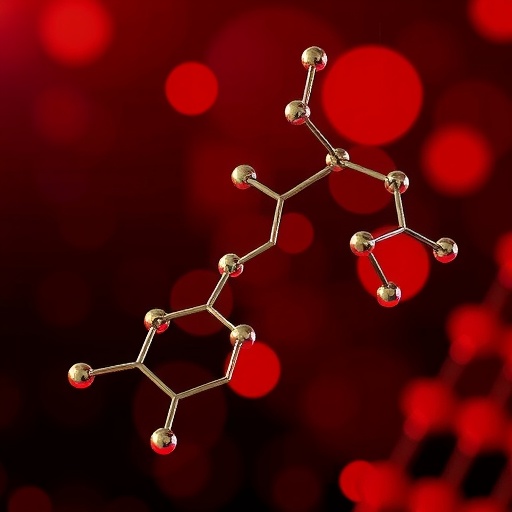In the relentless quest to master the art of constructing small ring carbocycles with exquisite control over stereochemistry, chemists have long grappled with significant synthetic challenges. Among these intriguing molecular architectures, alkylidenecyclopropanes (ACPs) stand out as a particularly compelling class due to their inherent ring strain and versatile reactivity, yet methods to access them enantioselectively are remarkably scarce. This bottleneck has constrained their broader application, despite the undeniable importance ACPs hold in pharmaceuticals and agrochemicals.
A breakthrough has now emerged from an international team of researchers who have unveiled a catalytic enantioselective synthesis of ACPs utilizing a bifunctional iminophosphorane (BIMP) catalyst system. This innovative approach cleverly exploits a strain-relieving deconjugation mechanism that imparts both high enantioselectivity and diastereocontrol, offering a powerful new avenue to forge these compact three-membered carbocycles with remarkable precision.
The significance of ACPs in medicinal chemistry cannot be overstated. These strained frameworks serve as versatile intermediates that can be readily transformed into cyclopropane rings ubiquitous in many drug molecules. For example, Nirmatrelvir, a prominent antiviral agent, incorporates cyclopropane motifs essential for its biological activity. Similarly, agricultural chemistry benefits from such motifs, as evidenced by insecticides like permethrin, which contain cyclopropane units critical to their potency and mode of action.
Traditional methods to construct ACPs enantioselectively have been limited by substrate scope and often demanded harsh conditions or lacked broad functional group tolerance. The newly developed protocol circumvents these issues by employing a tailored BIMP catalyst with a fine-tuned iminophosphorane moiety. This catalyst uniquely orchestrates the strain-relieving deconjugation of conjugated systems to generate ACPs while steering the reaction pathway to favor a single stereochemical outcome among multiple possibilities.
Central to this method’s versatility is the strategic modification of the catalyst environment, permitting the effective transformation of substrates bearing diverse functional groups, including esters, amides, phosphine oxides, and ketones. Such adaptability vastly expands the synthetic horizon of the process, allowing access to a variety of enantioenriched ACP architectures that were previously unattainable or challenging to synthesize.
The researchers’ approach to permethrin’s stereoselective synthesis particularly showcases the practical utility of their method. By carefully designing both substrate and catalyst, they succeeded in constructing a single stereoisomer of this widely used insecticide, opening the door for more precise and sustainable agrochemical production routes where stereochemistry plays a crucial role in efficacy and environmental profile.
Beyond synthetic achievements, the study integrates state-of-the-art computational chemistry to dissect the reaction mechanism with unprecedented clarity. High-level computational analyses elucidate the subtle interplay of electronic and steric factors guiding both diastereo- and enantioselectivity. This theoretical insight not only validates the experimental findings but also sets the stage for future rational catalyst design and reaction optimization.
The catalyst’s bifunctionality—combining an iminophosphorane base with a hydrogen-bond donor site—creates a unique microenvironment facilitating the delicate balance between nucleophilicity and electrophilicity necessary for the selective deconjugation process. This bifunctional activation strategy enhances both reactivity and stereocontrol, marking a notable advancement in catalyst engineering.
Crucially, the methodology addresses a broader chemical challenge—manipulating ring strain to drive selectivity in small ring carbocycle synthesis. By leveraging strain relief as a kinetic and thermodynamic lever within a stereocontrolled catalytic cycle, the research team achieves transformations that were previously either inefficient or unattainable using conventional catalytic methods.
The potential impact of this work extends beyond the synthesis of ACPs. The principles demonstrated here may inspire analogous strategies to access other strained ring systems, which commonly appear in natural products, pharmaceuticals, and materials science. Effectively controlling stereochemistry in these compact rings has immense implications for molecular design and functional property tuning.
Moreover, the environmental benefits of such catalytic processes are profound. Enantioselective catalysis often allows for reactions to proceed under milder conditions with reduced waste, aligning with green chemistry principles. The ability to create complex, enantioenriched ACPs catalytically will likely reduce the reliance on stoichiometric chiral auxiliaries or resolution steps, streamlining production pipelines for active pharmaceutical ingredients and agrochemicals.
The breakthrough reported is poised to stimulate further exploration into bifunctional catalyst design and the exploitation of strain-release mechanisms. As the boundaries of asymmetric synthesis continue to expand, integrating computational insights with experimental innovation remains a powerful paradigm shaping the future of synthetic chemistry.
In conclusion, this landmark study presents an elegant, practical, and mechanistically sophisticated solution to a long-standing synthetic challenge. By marrying sophisticated catalyst design with a deep mechanistic understanding, the research delivers a robust platform for accessing enantioenriched alkylidenecyclopropanes, unlocking new opportunities in drug development, agrochemical synthesis, and beyond.
Subject of Research: Catalytic enantioselective synthesis of alkylidenecyclopropanes using bifunctional iminophosphorane catalysts.
Article Title: Catalytic enantioselective synthesis of alkylidenecyclopropanes.
Article References:
Golec, J.C., Tan, D.H., Yamazaki, K. et al. Catalytic enantioselective synthesis of alkylidenecyclopropanes.
Nature (2025). https://doi.org/10.1038/s41586-025-09485-y
Image Credits: AI Generated




